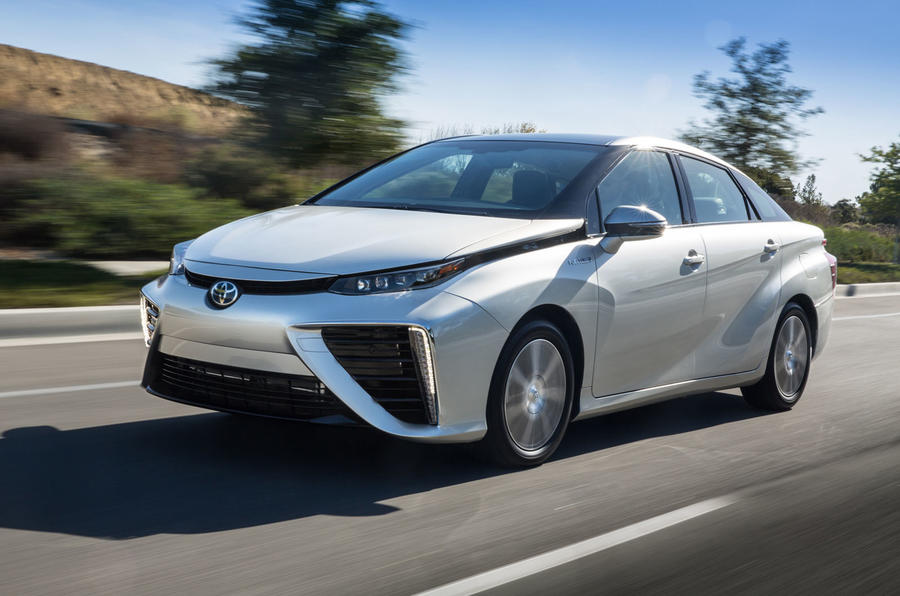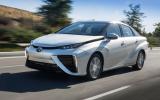The interior is rather less extreme and in keeping with what you might expect from a hydrogen-powered car. The surface quality of the plastics seems higher than that which you'll find in the Prius and the large central touchscreen feels right when you're seated in the car, even if it looks odd in photographs.
Under the unusual skin, the Mirai has an equally unusual layout. It’s a pretty big car (4.9m long and 1.82m wide) and is fairly typical in that it is front-wheel drive with MacPherson struts at the front and double wishbone suspension at the rear. However, that’s where the similarities with conventional cars end.
In the engine bay is the electric motor, mounted transversely, with the power control unit sitting on top of it. Toyota's new, compact Fuel Cell Stack sits under the front seats and the fuel cell booster is attached to its forward end, effectively sitting between the front seats.
The Fuel Cell Stack is a matter of great pride for Toyota engineers. Compared with the company’s previous attempt from 2008, the new unit is claimed to have more than double the specific output (1.4kW/L compared to 3.1kW/L) and is a fraction over 50 per cent lighter.
It uses an all-new ‘3D mesh’ cell design, which, in simple terms, clears the waste water away from its surface, in turn improving the the flow of oxygen to the catalyst layer. The stack can also start in temperatures as low as -30deg C and is said to have the same lifespan as that of a conventional internal combustion engine.
There are two hydrogen tanks, one mounted under the front seat and the other behind the rear seat. The nickel-metal hydride battery pack sits on top of the second tank. Underneath, the car has a full-length undertray, something that’s possible because there’s no hot engine or exhaust pipe to deal with.
When you look at a cutaway picture of the Mirai, it's clear that an awful lot of tech has been packaged within what is otherwise a pretty conventional structure. However, although the rear overhang isn’t ridiculously long, the boot space is more than a token effort.
As you might expect with an electric car, there’s not much more to do than press the start button, push the short gear lever into drive and hum away.











































Join the debate
Add your comment
Bit of a mess really
it may be the future
I do so hope that...